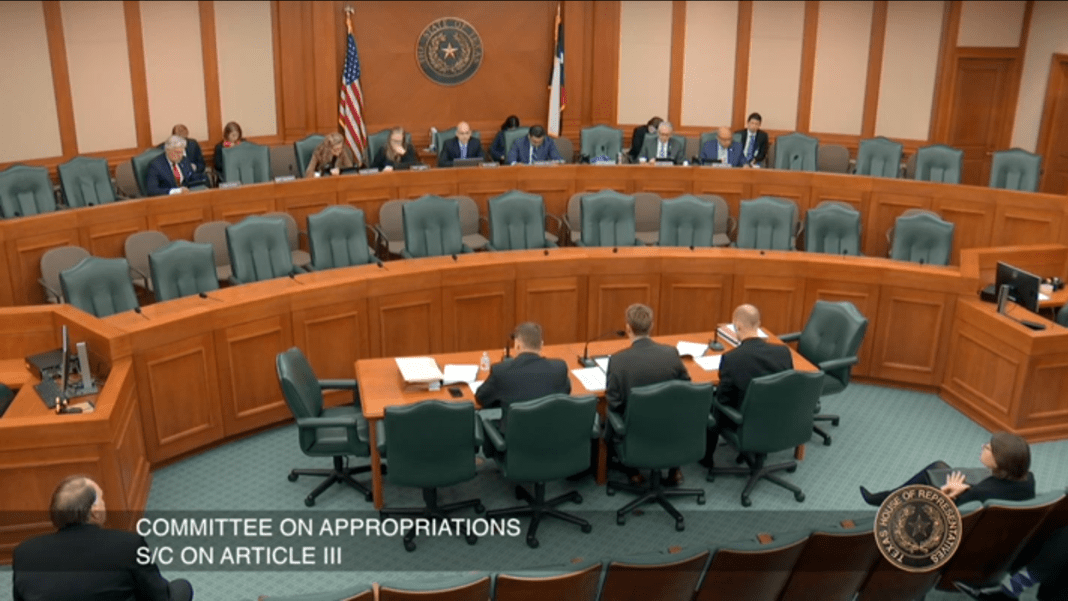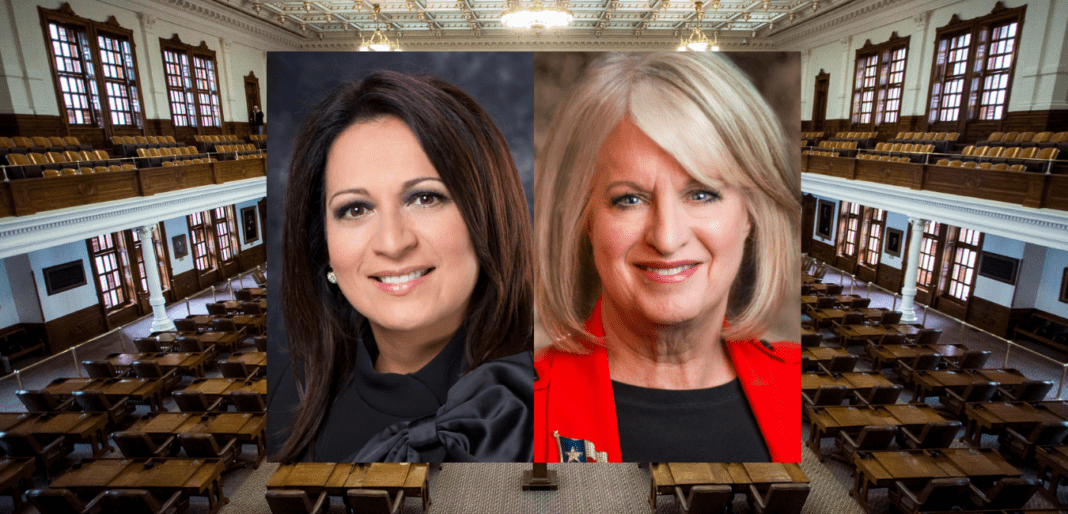AUSTIN, TX – The House Appropriations Subcommittee (S/C) on Article III held a meeting Wednesday, February 20th to listen to testimony on House Budget recommendations for the Texas Education Agency (TEA).
Testifying before the committee were members of the Legislative Budget Board (LBB).
Aaron Henrickson of the LBB reported the expected rise in school district property value growth is going to save the state $5.05 billion. This relates to the declining state share of public education funding. He added the state share in 2019 was 37.8 percent and is expected to decrease to 34.6 percent in 2021 under current law.
Notably, if the Legislature is able to fulfill the contingency for the $9 billion in additional state funding, the LBB estimates the state share will hover around 40 percent in the upcoming biennium, 41.1 percent in 2020 and 39.8 percent in 2021.
“The state is again seeing a windfall, if you will, off the hook for over $5.05 billion based on increased property values,” said Rep. Donna Howard (D-Austin).
The Property Tax Relief Fund (PTRF) in the current biennium came in lower than appropriated, which required an increase of $163 million in GR funds. Recapture came in higher than appropriated, requiring a decrease in $98 million in GR funds being disbursed, creating a net of $65 million. For the upcoming biennium, LBB estimates the PTRF will bring in $172 million in GR-related savings over the base and recapture will be bringing in $2.345 billion in GR-related savings over the base.
Under recapture, HB1 includes $7.02 billion, which is a $2.35 billion increase over ‘18 -‘19 levels. Under current law, LBB reports recapture paid as a percent of maintenance and operation (MO) revenue has stayed between 3-5 percent between 2006 and 2021, but beginning in Fiscal Year (FY) 2019, it will grow to 6 percent for the first time and will go up to 8 percent in FY 2021.
In FY 2019, an estimated 42 percent of districts will be at the $1.17 school district property tax rate cap, while 41 percent of districts will be at $1.04. To understand what this means, refer to this Texas Tribune explainer.
Notably, when Rep. Howard asked about whether per pupil funding (Foundation School Program without debt service included) in constant dollars prior to 2011 budget cuts is greater than it is in 2019, the LBB responded in the affirmative. She requested LBB for more analysis to be done regarding the amount of state public education funding if Texas maintained the level of funding of 2010 and had increased it based on inflation and population growth alone.
The Austin ISD yield, which determines the golden pennies in the enrichment tier of the school finance formula, is expected to increase significantly in the upcoming biennium. In FY 2020, the yield will be $126.88 per penny per Weighted Average Daily Attendance (WADA) and in FY 2021 the yield will be $135.92 per penny per WADA. The increase is largely due to “robust property value growth” and a declining student population. Altogether, this costs $2.2 billion. Rep. Mary Gonzalez (D-Clint) asked later if this was in part due to students leaving Austin ISD to local area charter schools. Henricksen said it was a factor.
The yields for both golden pennies and copper pennies are not currently funded in House Bill 1, testified members of the LBB.
Reform Austin has previously reported on the legislative effort to bring property tax relief. The chief property tax reform bill has already passed out of committee in the Senate, and its companion in the House is having a hearing before the Ways & Means Committee this week. Property tax relief is also included in the House Democratic Caucus’ “Texas Kids First” plan for fixing school finance in the form of an increase in the homestead exemptions.
In-Depth: Property Taxes, Recapture and State/Local Share of Public Education Funding







